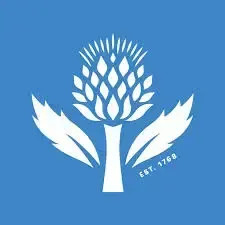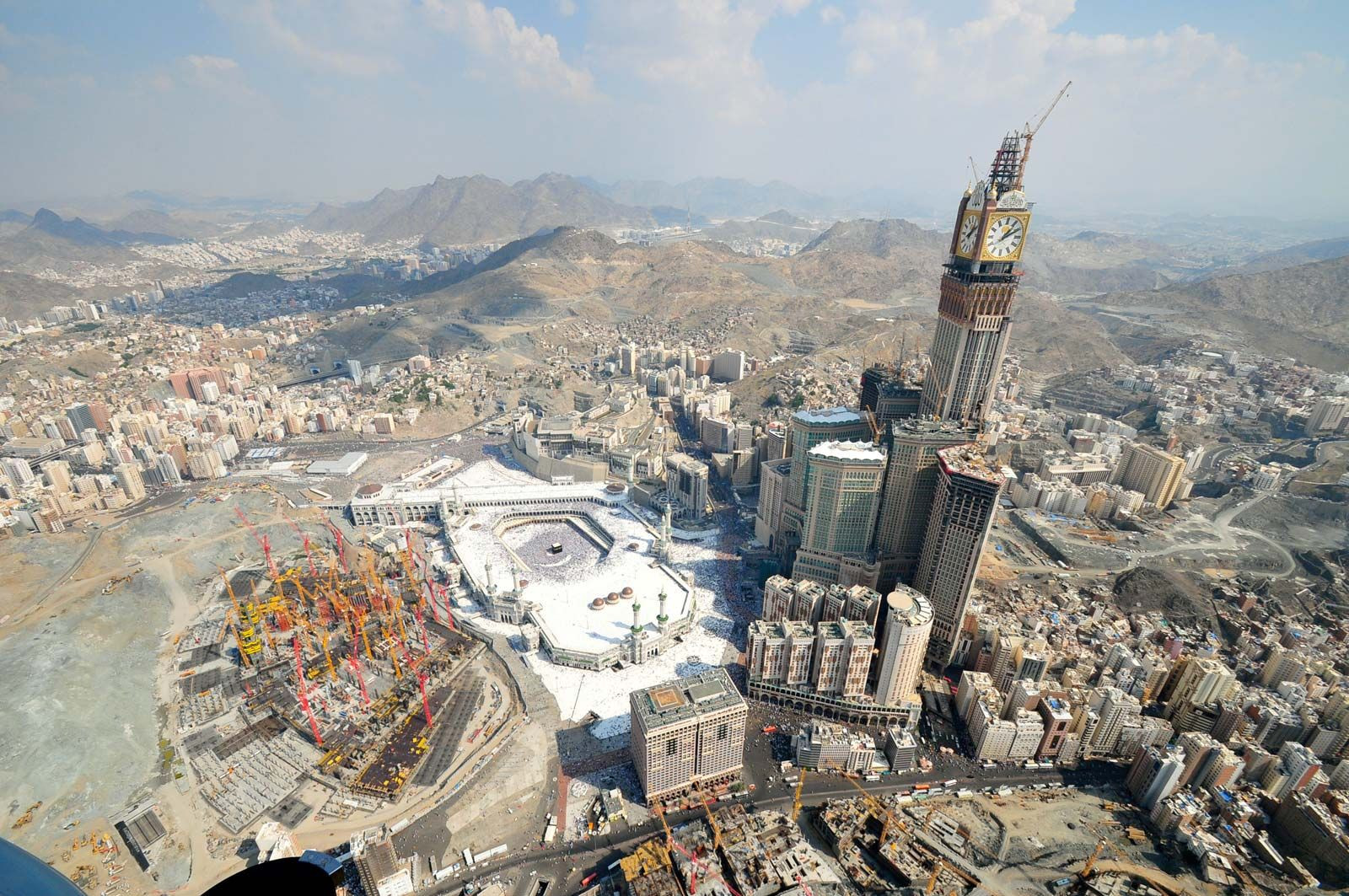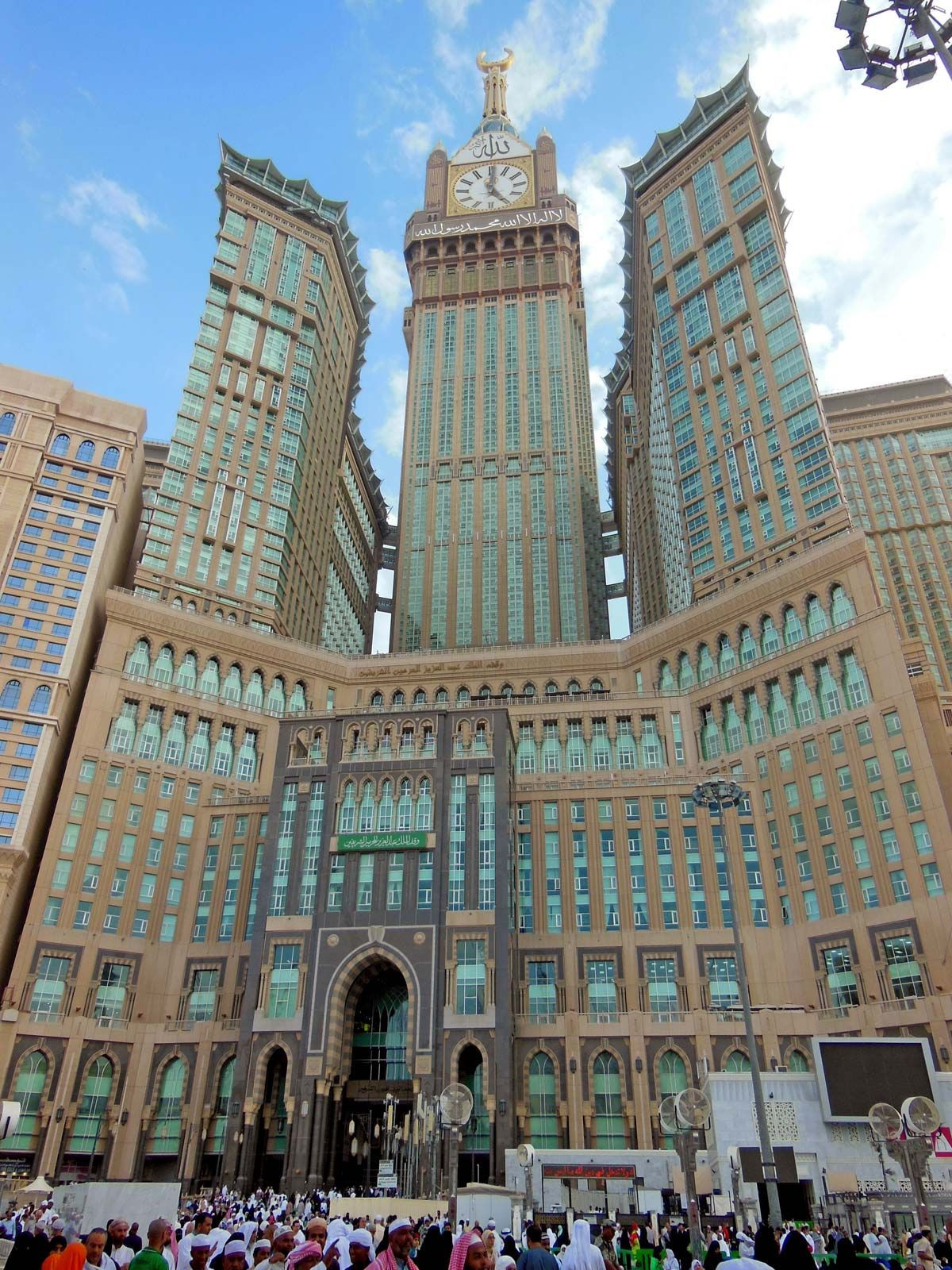Mecca, revered as the holiest city in Islam, holds a central place in the faith and history of Muslims worldwide. But Where Is Mecca geographically located, and what are its key geographical characteristics? This article delves into the city’s location, landscape, and environment, providing a comprehensive understanding of the physical context of this significant place.
Geographical Location and Landscape of Mecca
Mecca is situated in Saudi Arabia, specifically in the Hejaz region. Positioned approximately 70 km (43 miles) inland from the Red Sea, Mecca lies in a narrow valley known as Wadi Ibrahim. Its precise coordinates place it at roughly 21.4225° N latitude and 39.8262° E longitude in the western part of the Arabian Peninsula.
The city’s elevation is about 277 meters (909 feet) above sea level, nestled within the arid terrain of the Wadi Ibrahim and its tributaries. Mecca’s landscape is dramatically defined by the Ṣirāt Mountains that encircle it. These mountains not only shape the city’s physical boundaries but also contribute to its unique character. Notable peaks include:
- Jabal Ajyad: Rising to 1,332 feet, located to the east.
- Jabal Abu Qubays: Reaching 1,220 feet, also to the east.
- Jabal Qu’ayqa’an: Standing at 1,401 feet to the west.
- Jabal Hira’: Located northeast and towering to 2,080 feet, significant for containing the cave where Prophet Muhammad received his first revelations.
- Jabal Thawr: South of Mecca, reaching 2,490 feet, housing the cave where the Prophet sought refuge during the Hijrah.
Historically, access to Mecca was through natural gaps in these mountains, which now also dictate the city’s modern expansion. These passes lead towards:
- Northeast: To Mina, Arafat, and Ta’if.
- Northwest: Towards Medina.
- West: To Jeddah.
- South: In the direction of Yemen.
Climate of Mecca
Mecca experiences a hot, arid climate. Rainfall is minimal, averaging less than 130 mm (5 inches) annually, primarily during the winter months. Despite the low precipitation, Mecca is susceptible to seasonal flash floods due to its low-lying position. Temperatures remain high throughout the year, often reaching extreme levels, particularly in the summer when they can soar up to 49°C (120°F).
Plant and Animal Life in Mecca
The harsh climate of Mecca limits the diversity of plant and animal life. Vegetation is sparse, consisting mainly of drought-resistant species like tamarisks and various acacia types. Wildlife is also adapted to the arid conditions and includes animals such as wild cats, wolves, hyenas, foxes, mongooses, and jerboas.

City Layout and Urban Development
The heart of Mecca is the Haram Mosque, also known as the Great Mosque, which houses the Kaaba and the sacred Zamzam well. The old city is compactly built around the mosque, extending mainly north and southwest, constrained by the mountains to the east and west. Major roads like al-Mudda’ah and Suq al-Layl to the north and al-Suq al-Saghir to the south are central arteries.
Since World War II, Mecca has expanded significantly through the mountain passes, leading to the development of modern residential areas like Al-Aziziyyah, Al-Fayzaliyyah, Al-Zahir, Al-Zahra’, and Shari’ al-Mansur. This expansion includes infrastructure upgrades within the old city and the construction of towering skyscraper hotels around the mosque in recent decades.
The Haram Mosque itself has undergone numerous expansions, particularly in the late 20th and early 21st centuries by the Saudi government, transforming it into a state-of-the-art, multi-level complex capable of accommodating millions of worshippers. Modern amenities include advanced communication systems, air conditioning, escalators, and extensive pedestrian networks. The area around the mosque has been redeveloped with open spaces and underground walkways to manage the immense crowds. The Abraj al-Bayt complex, a massive skyscraper project, was also built south of the mosque to provide hotels, shopping centers, and prayer facilities near the holy sites.
Housing and Population in Mecca
Housing in Mecca varies, with older, more densely packed buildings in the old city and more spacious, modern villas in newer areas. Traditional buildings in the old city are typically two or three stories, constructed from local rock, while modern buildings use concrete. However, poverty exists in certain areas, often inhabited by pilgrims who have stayed in Mecca due to financial constraints.
Mecca has a high population density, especially in the old city. The population dramatically increases during the Hajj pilgrimage, with millions of worshippers visiting from around the world. While entry to Mecca is restricted to Muslims, the city is remarkably cosmopolitan, hosting diverse communities from numerous countries, often residing in distinct neighborhoods.
Conclusion
Mecca’s significance transcends its geographical coordinates. However, understanding where Mecca is situated—in the valleys of western Saudi Arabia, surrounded by the Ṣirāt Mountains, and characterized by an arid climate—provides crucial context to appreciate its unique environment and urban development. As the heart of the Islamic world, Mecca’s physical location has profoundly influenced its history, culture, and the experiences of billions of Muslims globally.


 Abraj Al-Bayt skyscraper complex in Mecca, Saudi Arabia, illustrating modern urban development near the holy mosque.
Abraj Al-Bayt skyscraper complex in Mecca, Saudi Arabia, illustrating modern urban development near the holy mosque.